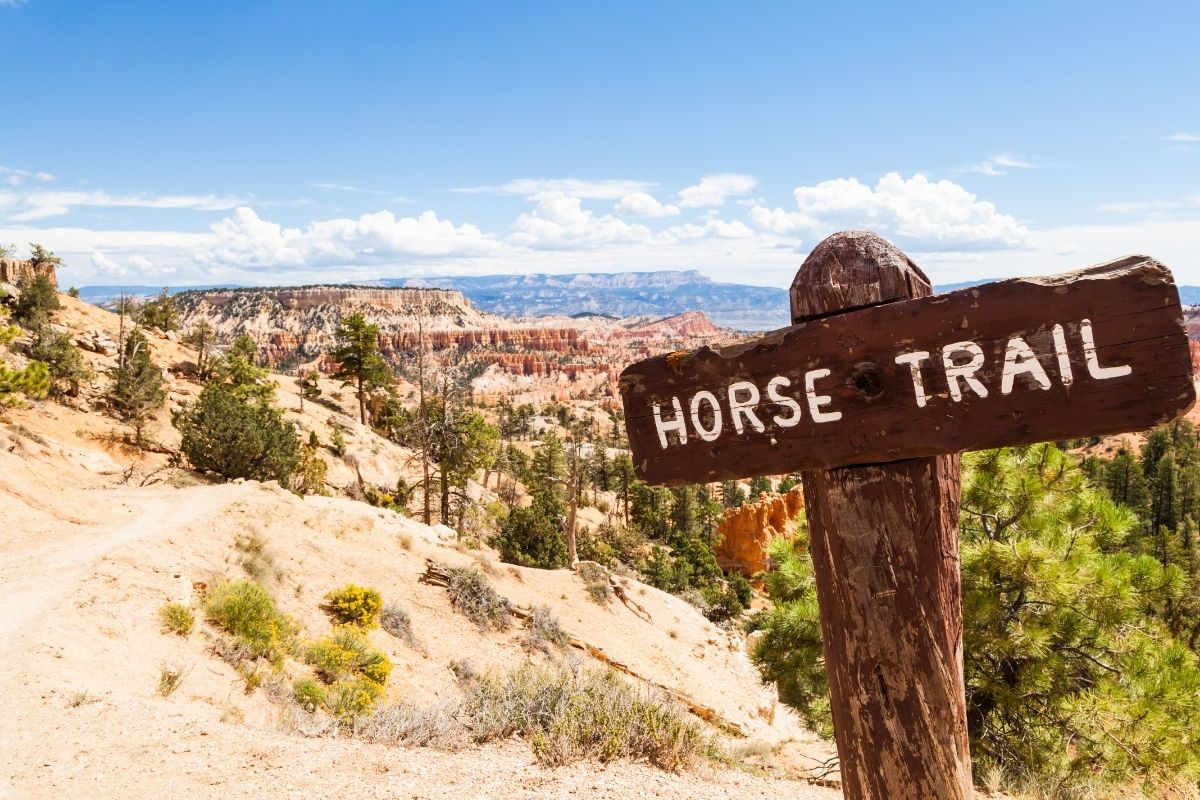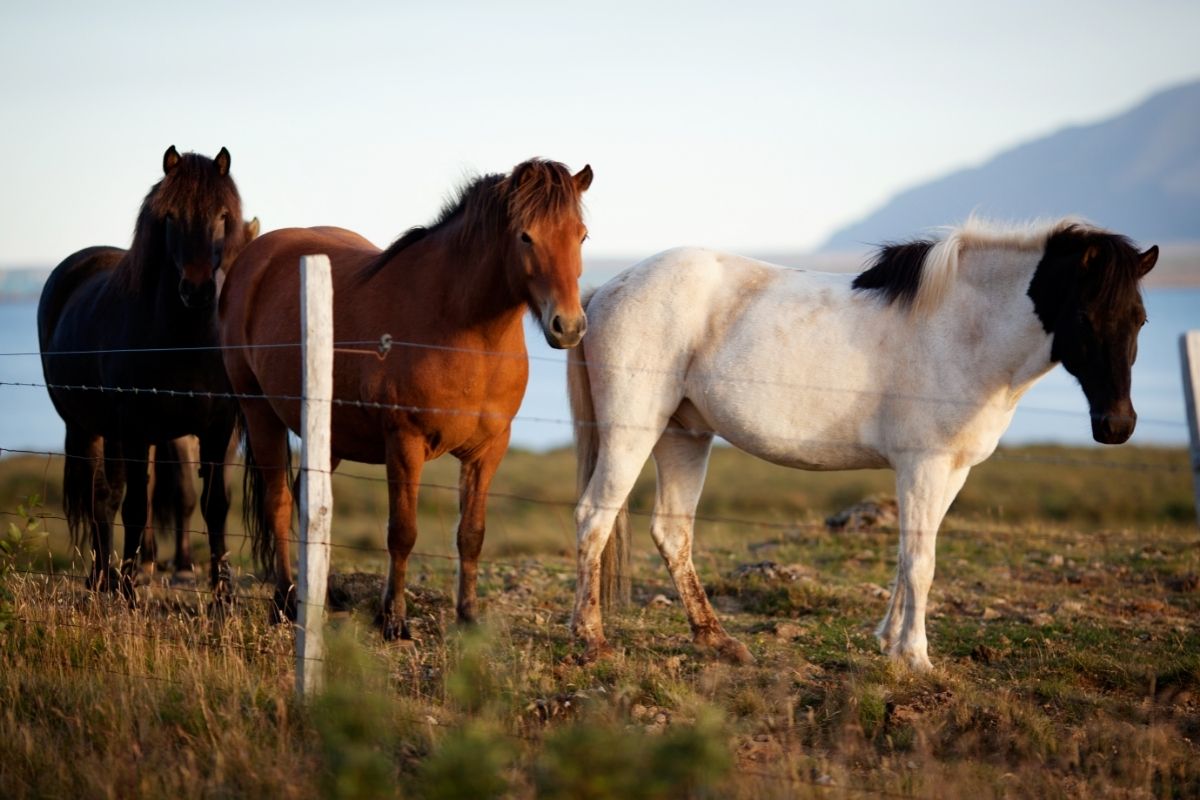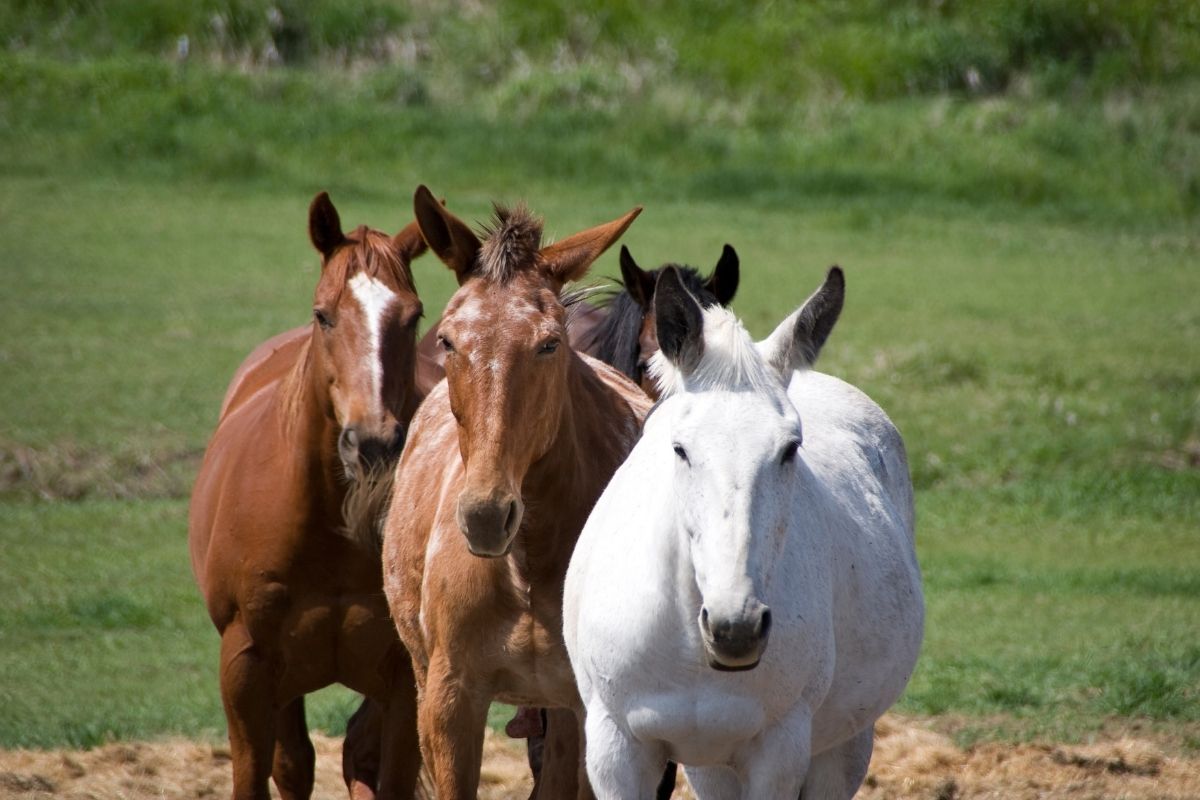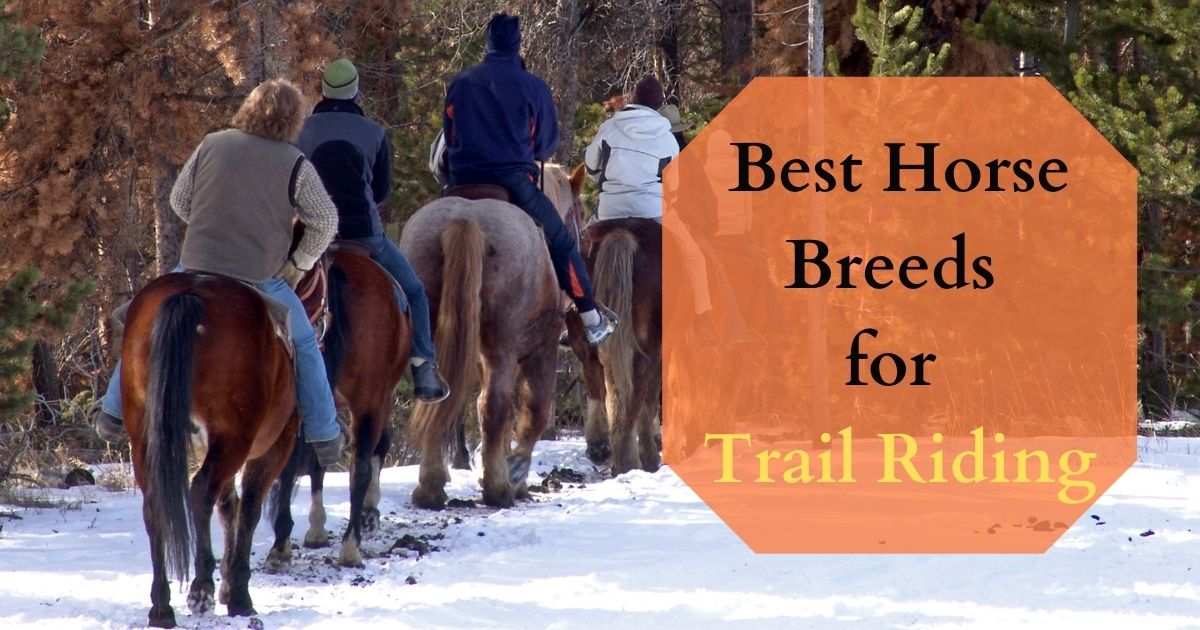Horses are sought-after pets among horse riders and horse enthusiasts, and there is a rise in the demand for the best horse breeds for trail riding.
Trail riding involves going outdoors on trails, bridle paths, and forest roads, but not on roads regularly used by motorized traffic.
For most people, trail riding is all about relaxation and unwinding from the rigors of a busy week. Trail riding provides horses and riders with an opportunity for new tricks and challenges other than conditioning for endurance.
Having the best horse breeds for trail riding will enable you to have a perfect ride while enjoying the beautiful scenery. Check out these breeds that will elevate your trail riding experience.

Trailing the Horsey Way
Trailing involves riding with your horse on trails and forest roads. It also requires the best skills to hit a perfect trail. While there are several best horse breeds for trail riding, each has unique qualities and features.
For this reason, you need to select the one that matches your personal preference. As much as it’s all about relaxation and enjoyment, you’ll also get to know your horse better. But to perform well on the trail, a better foundation will do you good. In the end, your four-legged friend will go wherever you direct it.
So, what are the best breeds for trail riding? Here is a compilation of the best trail horse breeds to help you achieve an enjoyable and harmonious outing:
- Quarter House
- Paint Horse
- Appaloosa
- Tennessee Walker
- Andalusian
- Spotted Saddle Horse
- Arabian
- Mule
- Australian Stock Horse
- Morgan
- Iceland
While any horse can be trail-ridden, these breeds produce hardy horses that can withstand harsh conditions.
Best Horse Breeds for Trail Riding
Here are the best horse breeds for trail riding and why they make good candidates:
Quarter Horse
Key Features
- Available in any color, but the most common one is Sorrel
- Calm in nature
- Short-compact body
- Plenty of energy
Overview
A Quarter horse comes from the United States of America and is a built and hardy animal. Colonists would breed and ride in the 1600s.
People prefer this breed since it emerged as a riding and cattle horse, hence the ability to sense cows. On top of that, Quarter Horse has great stamina since it conserves energy for future use. What’s more, is the compact body that facilitates balance.
Why Quarter Horse is a Good Candidate for Trail Riding
- They have a natural cow sense, which makes them comfortable riding through or in a herd of cattle
- They are intelligent horses
- Are sure-footed and don’t trip on uneven ground
- Have good temperaments; can be ridden by children and adults
- Have plenty of energy, which they save for future use
- They are easy-going so that you won’t have a difficult time bonding
Paint Horse
Key Features
- Come in many colors, but primarily white
- It has a height ranging from 57 inches (1.45 m) to 61 inches (1.55 m).
- Friendly nature
Overview
When you think of getting a friendly horse to trail ride, think of a Paint Horse. A pureblood breed where the parents are registered either with American Quarter Horse Association or the Thoroughbred’s register, hence a great trail horse.
Why it is a Good Candidate for Trail Riding
- They love to be led, for example, being given instructs but are great self-thinkers
- They have a striking coast pattern
- They are most comfortable when riding, thus less stumble
- Most of these breeds are double registered with the American Quarter Horse Association
Appaloosa
Key Features
- Have a height ranging from 56 to 64 inches (1.63 m)
- Mainly spotted in color
- Extremely intelligent and loyal
Overview
Appaloosa originated from Nez Perce Indians in the northwest part of the state. They were used to fighting during the Nez Perce War and traveled about 1200 in four months while fighting. Characterized by their speed and stamina, they were initially bred by other breeds such as the Arabian to increase their population.
Why Appaloosa’s are Good Candidates for Trail Riding
- They are hardy horses, thus can withstand harsh weather
- They are social; always a talking point; hence you’ll not be bored when riding
- Apart from being great on the trail way, they have a good jump
- They have all the characteristics of the Quarter Horse, including the color
- They have better stamina; hence you can spend all day on the trail
Tennessee Walker
Key Features
- Available in all colors
- They are versatile and have a smooth gait
- Have a height ranging from 57 inches (1.45 m) and 68 inches (1.73 m)
Overview
The best fourth breed of horses to choose from is Tennessee Walker. Tennessee Walkers are popular gaited horses to take on trails. These breeds are easy to ride and provide you with comfort. Additionally, Tennessee Walkers were bred to inspect plantations during the day and pull families’ carriages at night.
Tennessee Walkers are known for giving riders the sensation of floating because they tend to glide over the ground.
Why are Tennessee Walkers Good Candidates for Trail Riding?
- Have a calm temperament
- Friendly, thus suitable for both children and adults
- Comfortable to ride
- Have plenty of stamina and strength; can cover a lot of ground without getting exhausted
Andalusian
Key Features
- Mainly bay and gray in color
- It has a height of 57 inches (1.45 m) for mares and 64 inches (1.63 m) for stallions
- Obedient and intelligent
Overview
Andalusians are popular stock horses, originally bred in the region’s aggressive Iberian bulls. Originally from Spain, where horse owners widely used them in the classic dressage error.
Why are Andalusians Good Candidates for Trail Riding?
- They are obedient; can follow instructions quickly and willingly
- They can withstand any type of weather
- Comfortable to ride on due to their long strides
- Calm and bold; they won’t panic if you encounter a predator
- They are athletic; they can gallop for at least 12 miles (19.31 km) without stopping

Spotted Saddle Horse
Key features
- Has a height of 57 to 64 inches (1.63 m)
- Have a pinto color, and sometimes they can be overo or tobiano
- Friendly personality
Overview
Spotted Saddles are horses with great personalities and athletic abilities. Besides that, they are registered as Missouri Fox trotters because they exhibit a pinto color and an ambling gait.
Why Spotted Saddle Horses are Good Candidates for Trail Riding
- They are social and easy to train
- They are surefooted but not too cautious and are not likely to slip
- Friendly, courageous, and gentle
- Provide a comfortable ride because they are gaited horses
- They have great features, thus perfect for all riders
Arabian
Key Features
- Have a height ranging between 56 and 60 inches (1.52 m)
- Usually gray, bay, black, and chestnut in color
- Kind and calm nature
Overview
Arabian horses come from the Arabian Peninsula and are highly-spirited, intelligent, patient, and strong.
Why the Arabians are Good Candidates for Trail Riding
- Strong and endures all types of rigors
- Loyal and social
- They can survive with less water due to their desert background
- Known to be intelligent and fast
- They are sure-footed and move quietly
Mule
Key Feature
- Have a height range of 50 inches (1.27 m)
- Their most common colors are sorrels, bay, gray, and black
- Intelligent, friendly, and cautious
Overview
Other than horses, mules are becoming more popular when it comes to trail riding. They have been used as pack animals in dangerous terrain. The offspring of a female and a male donkey are more intelligent and naturally cautious.
Why Mules are Good Candidates for Trail Riding
- They are sure-footed and tough and have endurance
- Plenty of stamina
- Great for rough and uneven trails since they are still used over terrain vehicles can’t manage
- Tough skin, hence fewer scratches and scrapes
- They have a lot of energy and can carry heavy weights
Australian Stock Horse
Key Features
- Have a height of 56 to 66 inches (1.68 m)
- Available in any color
- Calm temperament and a great deal of stamina
Overview
The Australian Stock Horse was bred for any purpose since it was intended for Australian conditions. These versatile horses are still used as a workhorse and are ridden in Australian stock style. They are sometimes referred to as Australian Quarter Horses since they are a bit leaner than the original Quarter.
Why are Australian Stock Horses Good Candidates for Trail Riding?
- Have willing temperaments and are intelligent.
- Used in Australia to round up cattle in the mountainous terrain
- Soundness and sure-footed
- Agile and athletic horses
Morgan
Key Features
- Available in any color but mainly chestnut, bay, brown, and black
- Courageous
- Height of 56 to 62 inches (1.57 m)
Overview
Morgans are great trail horses and have developed the best breeds, such as the Tennessee Walker. They are strong and can carry a lot of weight over a long distance. This is evident from the first Morgan, called Figure, which could pull over 400lb (181.44 kg) quickly.
Why Morgans are Good Candidates for Trail Riding
- Strong; can carry a lot of weight
- Confident and intelligent
- Perfect for gaited and non-gaited rides since some are gaited.
- Versatile horses
- Have a great sense of humor
Iceland Horse
Key Features
- Height of 52 to 56 inches (1.42 m).
- Commonly available in solid colors
- Tough, comfortable to ride, and friendly
Overview
Icelands have been used to round-up livestock, up until today, on frozen ground for long hours. They are strong and do this without tiring. They also exhibit a special inbuilt home device that guides them back home.
Why Iceland’s are Good Candidates for Trail Riding
- Strong; can be ridden for days without tiring
- They are hardy
- Comfortable gaits can be fast; thus, keep up with bigger horses
- They can carry a lot of weight, although they are small
- Have good temperaments
Gaited Horses VS Non-Gaited Horses
Knowing the difference between gaited and non-gaited horses will help you decide which horse to buy. So, what’s the difference?
Gaited horses are smoother to ride because of the way they place their legs. On the other hand, non-gaited horses are difficult to ride because of how they move their legs. Additionally, gaited horses can see far and cover a great distance due to their high speed.
On the contrary, non-gaited horses are slow; horse owners claim gaited horses go too fast to enjoy the scenery. With all this in mind, you have to remember that there’s no right or wrong choice. You can go gaited or non-gaited as it all depends on personal preference.
With all the essential information on the best horses to ride, isn’t it time to train your horse basic exercises? Well, here are crucial tips to help you out.

Tips to Train Your Trail Horse
Loading
Topping the list is training your horse how to load willingly. Loading is essential; however, you won’t succeed without having a willing horse. Although horses can be stubborn, you need to be patient and learn to put up with hauling.
If the loading problem persists, try to conduct a self-check between you and your horse. For better results, check out if they are stressed, develop trust, and send them on errands to help in safe loading.
Teach It How to Follow Instructions.
As a horse owner, you need to have a pet that will go where you point him. A good trail horse will withstand obstacles, water, and rocks. If you are lucky, you will overcome by nature but not by training. If the horse refuses, conduct leading exercises.
Train on Coming back to Neutral
Horses are known to be stubborn. Things can sometimes get messy, but a good horse will maintain his cool no matter the circumstance. If your horse overreacts to things such as dog barks or an attack from a predator, prepare yourself for war. If this happens, train, lead and ride with intentions to bring them into a neutral state.
Teach Your Horse to be careful
Just like human beings, horses need to be careful. It is essential to know where they put their feet to avoid being hurt in rugged terrain or circumstances as a horse owner.
Train Your Horse on How to Overcome Flight Instinct
While riding, you might come across a deer or a monkey. But what will your pet do? Cause tantrums or maintain its cool after sensing danger? Well, a horse with confidence will maintain the relaxation cue.
Maintain His Independence
Independence plays a vital role in every horse’s life. It not only gives them the freedom to interact but also learn from their counterparts. Furthermore, it will enable it to avoid trots because others are doing it. For better results, watch them interact with their companions.
Teach It to Head Out When Going Home
A good horse should go anywhere without complicating things. This will enable it to adjust to new environments. This way, they won’t jig or grow anxious.
If your horse fails to trail poorly, here’s what to do.
Things to do If your Horse won’t Trail
After training, you might expect your horse to behave properly, but when he doesn’t settle down:
Re-direct
As a horse owner, your horse may behave weirdly and fail to follow directions. When this happens, you need to resolve the issue by redirecting the bad behavior. This will make it think and remember that you are the leader.
Avoid Securing Your Horse
Horses are excellent animals. While on the trail, things might happen. If this happens, don’t offer security, as they might act up. In the end, you’ll regain control.
Dismount
Dismounting is an expert tip of a misbehaving horse. First, you need to allow them to rest. However, it is only effective when they rest or put it up for the day.
Longe for Respect
When your horse won’t trail, practice longeing. This is an excellent exercise for hustling a horse’s feet. However, it involves frequent changes of direction, which requires your horse to pay attention.
To longe for respect, send your horse around you at a brisk trot while asking for direction change after two or three circles. Then, pull and release to encourage it not to drag on the line. For better results, do this in the same fashion for about ten minutes until it responds positively.
Ride in Small Circles
Ride in circles by using something like a tree. This will make him realize and understand that you want it to follow the instructions.
Remount Flex
Check on the horse’s level of relaxation. For example, you can ask it to flex the neck on one side then the other side while sauntering in circles.
Keep Your Horse Engaged
Now that you have your horse under control, use extra care to keep it focused.
Conclusion
Horses are the best animals to hit the road on a calm evening as they are friendly and intelligent. If you are a cowgirl or a horse lover, you probably need the best breed to trail. However, there are various horses for riding to choose from.
Some horses might be stubborn; they require training and guidance to achieve a perfect ride. When you finally manage to contain them, you’ll need to ride them regularly, practice trail all the time, watch for cheats, and practice easy rides.
There’s no perfect breed for trail riding, as all trail horses display unique qualities and characteristics. Therefore, choose the one that fits you best and make the most out of your outings!
